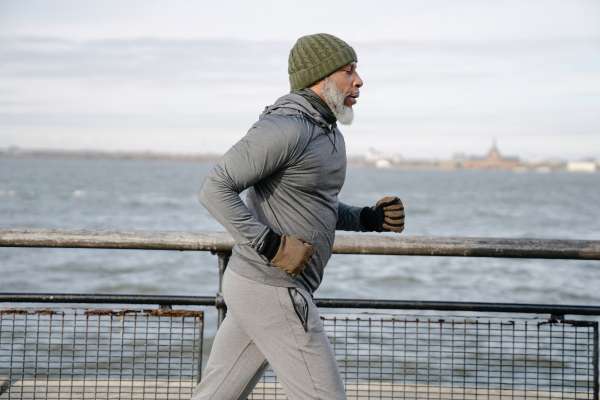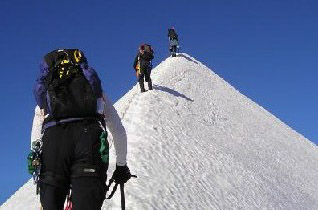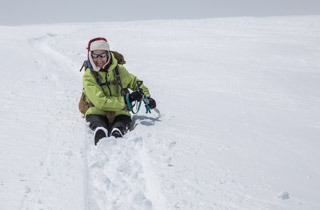Over 50 Cardiovascular Training
Over 50 Cardiovascular Training
Aerobic Conditioning for the Over-50 Population
Do any of the following statements sound familiar? “I can go forever, but I also take forever.” “I can’t keep up with the 20-somethings anymore.” “It always seems to take forever to recover.” “Training at 70% of my theoretical max heart rate feels like I’m barely moving. Am I harming myself if I exercise higher than that?”
We hear comments like these constantly from our older clients who lament about how their bodies cannot keep pace with their minds past the half-century mark. Each of these complaints can be eased by using a training routine designed specifically for your sport and to address your body’s particular needs.
Simple Self-assessment
If you identify with any of the opening comments, answer these questions.
1) Have I changed my cardiovascular routine in any way in the past two years?
2) Do I know what my average “go forever” (65-70% MHR) heart rate is?
3) Do I currently do any speed training (a combination of intervals and strength)?
4) Am I happy where I am to keep doing what I’m doing?
If you answered “no” to any one of the four, then continue reading.


Variety
The biggest mistake we see clients make is repeating the same workout over and over, either using the same resistance level on a machine, gaining the same elevation or mileage, matching time (or getting slower), or following one course without ever changing anything about it. Our bodies adapt to whatever stimulus we give it within a few weeks. To get out of an aerobic rut, change something about your training routine.
This could be as simple as traveling over your favorite walk/jog/bike/run route in the reverse direction, so you see things in a new way. You could choose a different program course or resistance on the exercise equipment. Try exercising with a training partner instead of always going alone or listen to favorite upbeat music occasionally for inspiration. Insert a few speed bursts (a technique known as “fartleks”) on an otherwise familiar course. If you always walk with your dog and it stops often for sniff breaks, you might find adding a light backpack a new challenge for your hips, legs, and core.
Maximum Heart Rate
The next step would be to add a few workouts of different intensities, exercise options, and durations to build variety into your schedule. By exercise intensity, we mean working at varying percentages of MHR, or Maximum Heart Rate.
As we age, our MHR generally decreases. To estimate yours, use 208 – .7*(age) to give you your theoretical MHR. MHR – RHR (resting heart rate averaged over 3 days) gives you a number known as HRR (heart rate reserve). Multiply your HRR by .75 then add this number to your RHR to get your “go forever” upper approximation for sustained cardiovascular training.
The 60-year-old with a RHR of 56 beats per minute would have an MHR of 166 beats per minute (208 – .7(60) = 166) and HRR (MHR-RHR) of 110 beats per minute. This athlete’s aerobic training zone would then be calculated by multiplying by .65 * 110 (71.5) and .75 * 110 (82.5). Finally, adding each of these numbers to RHR means a target training zone of 127.5 – 138.5 beats per minute for endurance workouts.
The old, more familiar formula of 220 beats minus age, multiplied by 65% and 75%, underestimates the heart rate range as 104-120, fully 25 beats lower. So, if you feel your “ideal range” leaves you standing still during endurance workouts, try using a more appropriate formula that will allow you to work harder without concern about overdoing it.
Strength and speed
If you feel like you can no longer keep pace with your hiking partners, or you do fine without a pack but struggle as soon as you add any significant weight, try adding strength training. If you struggle to increase your speed or gain strength, consider trying one of the following:
- Increase the weight and decrease repetitions for a month so that you are completing sets of 6-8 repetitions with proper form
- Select targeted exercises that will help you develop strength in the muscle groups where you need it most
- Change the frequency of your strength training. If you perform a full body workout once a week, try increasing frequency to 2-3 times a week. And if you train for strength more than three times a week, you may need additional recovery time between sessions
Cardiovascular Recommendations for Athletes over 50
Regardless of your age, ethnicity, or gender identity, a goal is a goal. If you are unable to hike for 4-5 hours a day with a pack while gaining 4,000 feet of elevation per day on Mount Rainier, you simply will not be able to reach the summit. The requirements for each individual remain the same, but how you go about achieving those requirements change as we age.
The American College of Sports Medicine (ACSM) recommends that “able-bodied adults” do cardiovascular training 3-5 times a week for more than 20 minutes. Since outdoor athletes are striving for far more rigorous end goals than “mowing the yard” or “flying a kite with the grandkids” they require far more exercise than the sedentary “able-bodied adult” and should allow additional preparation time than they need when they were younger. In other words, someone in their 20s may be able to get Rainier-ready in two months, while someone in their 60s might need six months or longer.
A well-rounded in-season aerobic conditioning program suitable for year-round backpacking, scrambling, hiking, climbing, trekking and mountaineering might include several 45-60-minute endurance workouts; a shorter, higher intensity 30-minute aerobic workout with a steady effort at about 80% MHR (what we call “Tempo” workouts); an intervals workout focused on developing speed; and a hike for an hour or longer (carrying a weighted backpack).

Move Frequently and Remember to Recover
Studies show that shorter bouts of cardiovascular training spread throughout a day can be as effective as one long one of equal cumulative duration. If you are unable to free up two hours for a pack workout but you can do two one-hour pack workouts (i.e. before and after work or school), do so, rather than skipping endurance work altogether. And if it’s tricky finding an hour, maybe you can break the day into 3 15-20-minute segments.
Just be sure that as you approach any longer goals, you’re doing most of your endurance workouts in one session. A few workouts broken into shorter pieces may be the key to fitting everything in before your trip.
Recovery
As we age, we need to focus more attention on recovery time between hard efforts. If you were able to do daily aerobic workouts when you were younger, you may wonder about how decreased frequency will affect your results. Never underestimate the benefit of adequate recovery; by training smarter, not always more, you may see performance increase.
Also, be aware that Delayed Onset Muscle Soreness (DOMS) is not always the best gauge of how much recovery time you need. After a particularly challenging outing, if you feel more sore than usual, you may benefit from low-intensity active recovery efforts (i.e. <65% MHR) such as 20-30 minutes of easy walking, flat-land biking, swimming, or yoga. Such recovery-focused workouts ARE NOT geared toward increasing aerobic capacity, so keep them low effort, but DO let yourself move, and see what a difference it makes. Active recovery, done properly, can help increase blood flow, enhance flexibility, and decrease overall soreness.






